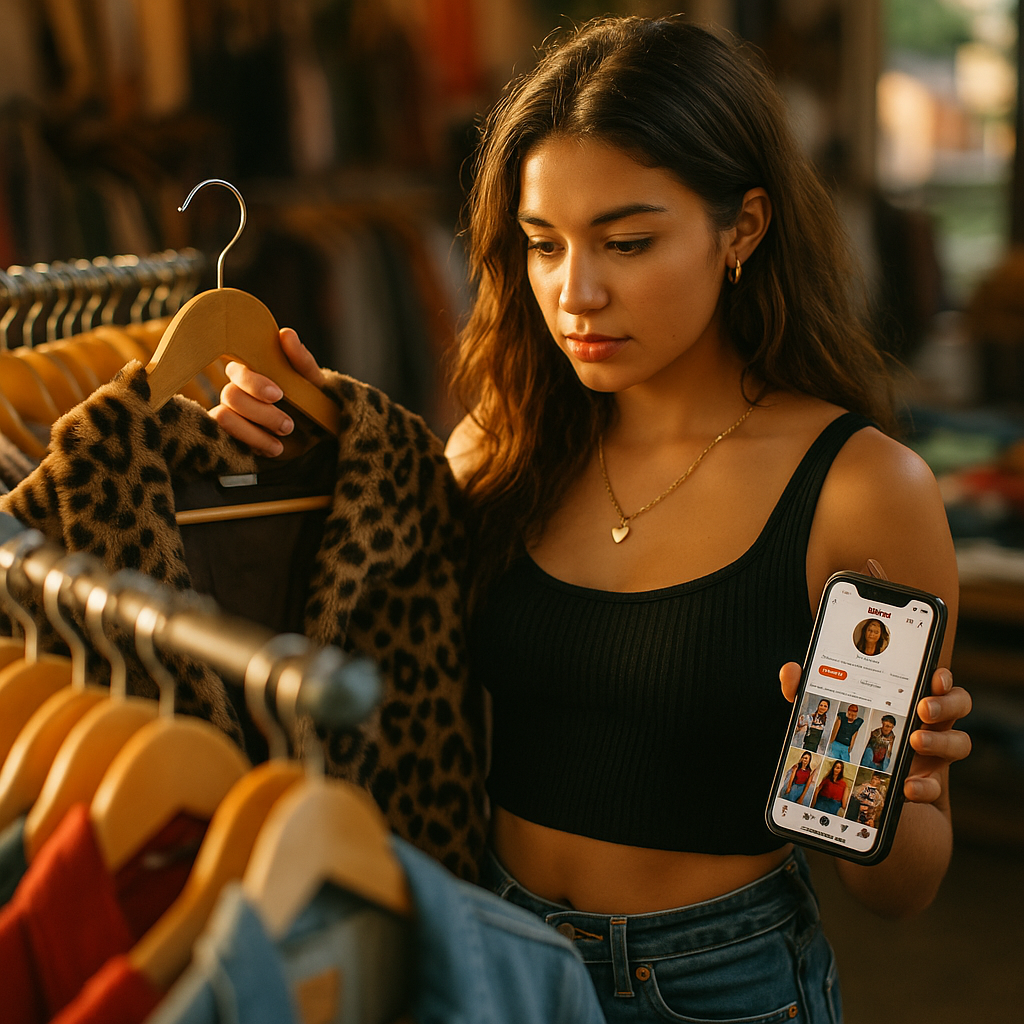Depop created a fashion resale movement through influencers, turning secondhand apparel into a global trend. By empowering creators and tapping into Gen Z values, the app revolutionized how people see preloved fashion. But how exactly did Depop shift attitudes and build a billion-dollar marketplace? Let’s unpack the secrets behind its disruptive success.
The Rise of Depop’s Community: Building a Fashion Reselling Ecosystem
Depop’s journey from a niche app to a powerhouse in sustainable fashion resale began with an intentional focus on community. Founded in London, Depop positioned itself not just as another online marketplace, but as a social shopping platform where users could connect, share inspiration, and create unique storefronts.
This approach resonated especially with Gen Z and Millennial consumers who value individuality and digital connection. The integration of social features—likes, follows, and messaging—transformed shopping into a shared creative experience. The result is an ecosystem where buying and selling transcend transactions, becoming part of users’ online identity and daily conversations.
How Influencer Marketing Powered Depop’s User Growth
Depop’s influencer strategy was central to its viral expansion. By partnering with micro and macro influencers across platforms like Instagram, TikTok, and YouTube, Depop built credibility and buzz at lightning speed. These influencers, often already respected for their unique fashion sense, showcased their finds and personal Depop shops, inspiring their audiences to join and participate.
Rather than traditional advertising, Depop focused on authentic, influencer-driven content that felt organic to followers. Tutorials on upcycling clothes, Depop shopping hauls, and styling secondhand pieces quickly became popular genres. By letting influencers shape messaging, trust and engagement soared—converting attention into active buyers and sellers.
The Role of Gen Z Values in Depop’s Sustainable Fashion Trend
Gen Z’s passion for sustainability, self-expression, and affordability perfectly aligned with Depop’s mission. The platform provided an avenue to combat fast fashion’s environmental impact, offering users the ability to recycle and reimagine clothing rather than consign it to landfills.
Influencers amplified these values in their content, highlighting the importance of circularity and responsible consumption. Depop’s “new wave” of resale culture normalized the idea that pre-owned fashion could be both fashionable and ethical. According to recent surveys, more than 70% of Gen Z shoppers now consider sustainability in their purchases. Depop has played a leading role in shifting this mindset globally.
Depop’s Algorithm and Social Shopping Experience
One of the unique aspects behind Depop’s growth is its algorithm-driven feed. Unlike traditional e-commerce platforms, Depop’s interface mirrors popular social platforms, surfacing personalized listings based on browsing behavior, interests, and activity of followed users.
This algorithmic approach encourages discovery: buyers can stumble upon one-of-a-kind pieces from creators worldwide. For sellers and influencers, this means greater visibility for their curated shops, with the potential to go viral through trending tags and featured placement. Combined with in-app messaging and reviews, Depop transformed reselling fashion into an engaging, ongoing social experience.
Brand Building and Monetization: Influencers as Entrepreneurs
On Depop, influencers aren’t just promoting their style—they’re building distinct brands. Many have established full-fledged businesses, leveraging Depop’s infrastructure for payments, shipping, and promotion. The low barrier to entry and dedicated community allow creatives to monetize their eye for fashion without major upfront investment.
This entrepreneurial model is further reinforced by Depop’s mentorship and Seller Program, which supports top sellers with resources, analytics, and personalized guidance. In 2025, some creators report monthly earnings of $5,000 or more from their Depop shops, establishing it as a legitimate income stream and creative outlet.
Shaping the Future: Depop’s Influence on Global Fashion Trends
Depop’s impact goes beyond its own app. Fashion houses and high-street retailers now incorporate vintage and upcycled collections, responding to resale’s rising influence. Traditional celebrities and digital creators alike are reimagining their role—not as static ambassadors, but as active participants in the resale movement.
With its influencer-driven model and commitment to ethical fashion, Depop has set new industry standards, catalyzing a global movement towards conscious, community-led style. The ripple effects are clear as more platforms adopt similar algorithms, reward structures, and user-led innovation.
Conclusion
Depop created a fashion resale movement through influencers by blending social interaction, sustainability, and business opportunities. This unique approach has inspired millions to view secondhand fashion as desirable and accessible. As influencers continue shaping trends and values, Depop’s community-driven model remains a blueprint for socially-conscious digital commerce in 2025 and beyond.
FAQs: How Depop Created A Fashion Resale Movement Through Influencers
-
How did influencers help Depop grow its fashion resale movement?
Influencers showcased personal style and success on Depop, encouraging followers to join and shop. Their authentic content increased trust, turning them into powerful brand advocates and community builders.
-
Why is Depop popular among Gen Z shoppers?
Gen Z values sustainability, creativity, and affordability. Depop combines all three, offering a platform to buy and sell unique secondhand items while supporting eco-conscious fashion choices.
-
How do Depop’s algorithm and social features impact reselling?
Depop’s algorithm curates personalized feeds, promoting discovery and viral trends. Social features like following, messaging, and reviews foster trust and community, enhancing the selling and buying experience.
-
Can you make money as a Depop influencer?
Yes, successful influencers on Depop often turn their shops into full-time businesses, leveraging their personal brands to generate income through sales, promotions, and collaborations.
-
How has Depop influenced the broader fashion industry?
Depop has normalized secondhand shopping, driven sustainability trends, and inspired both high fashion and mainstream retailers to launch resale and upcycling initiatives, transforming the industry’s approach to circular fashion.
